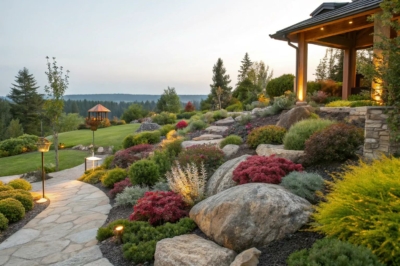1. Add Rock Features for Structure
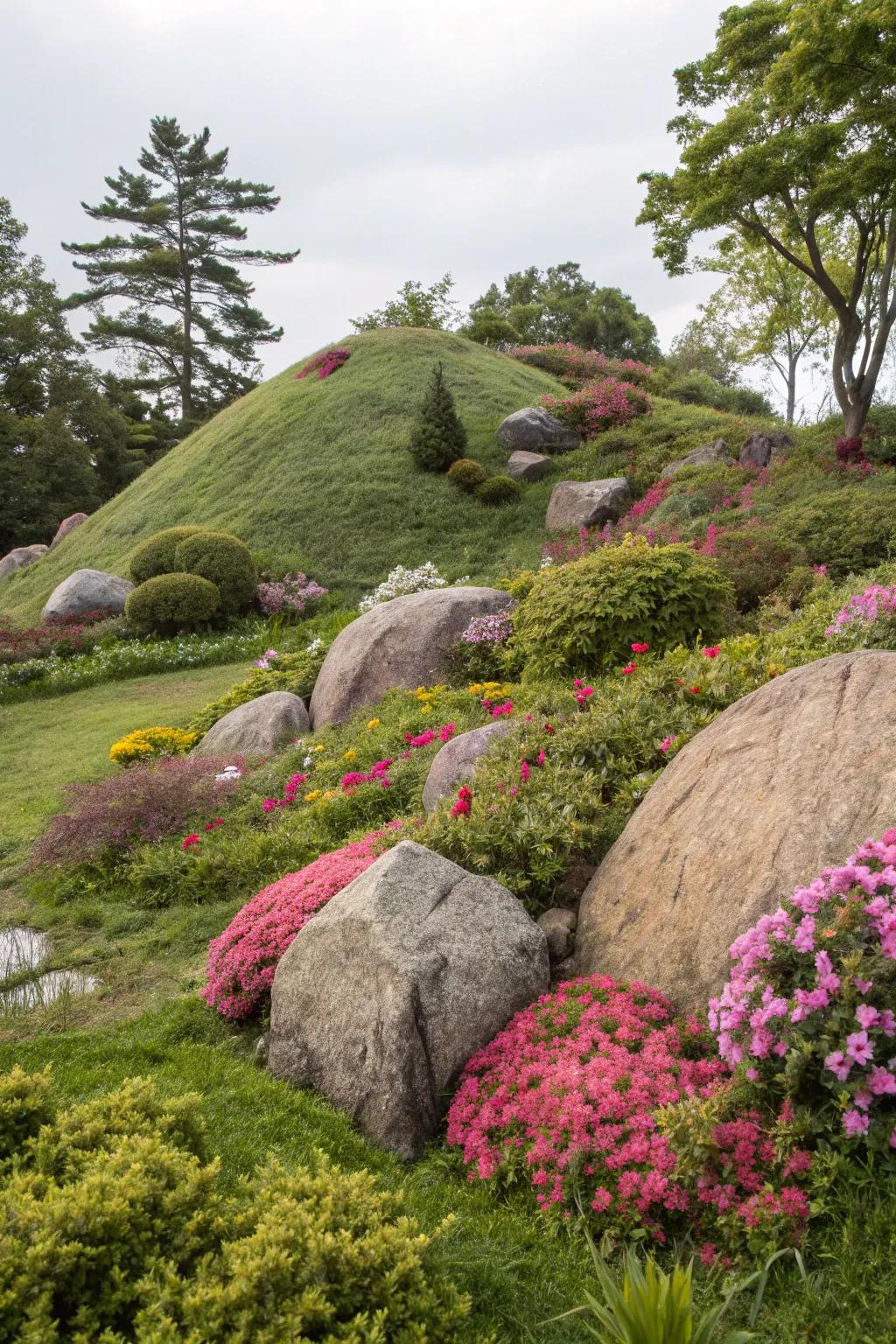
Incorporating large rocks and boulders into your mounds adds both structure and a touch of the dramatic. My mounds never feel complete without these solid beauties anchoring the design.
A few choices to try:
- Natural Granite Landscaping Rocks: Enhance your garden’s design with durable granite rocks adding timeless elegance and stability.
- Decorative River Boulders: Transform your landscape with river boulders for a natural and serene outdoor aesthetic.
- Flat Stacking Stones: Create stunning rock formations; stack these stones for a captivating, multi-level landscape feature.
2. Define Borders with Mulch or Gravel
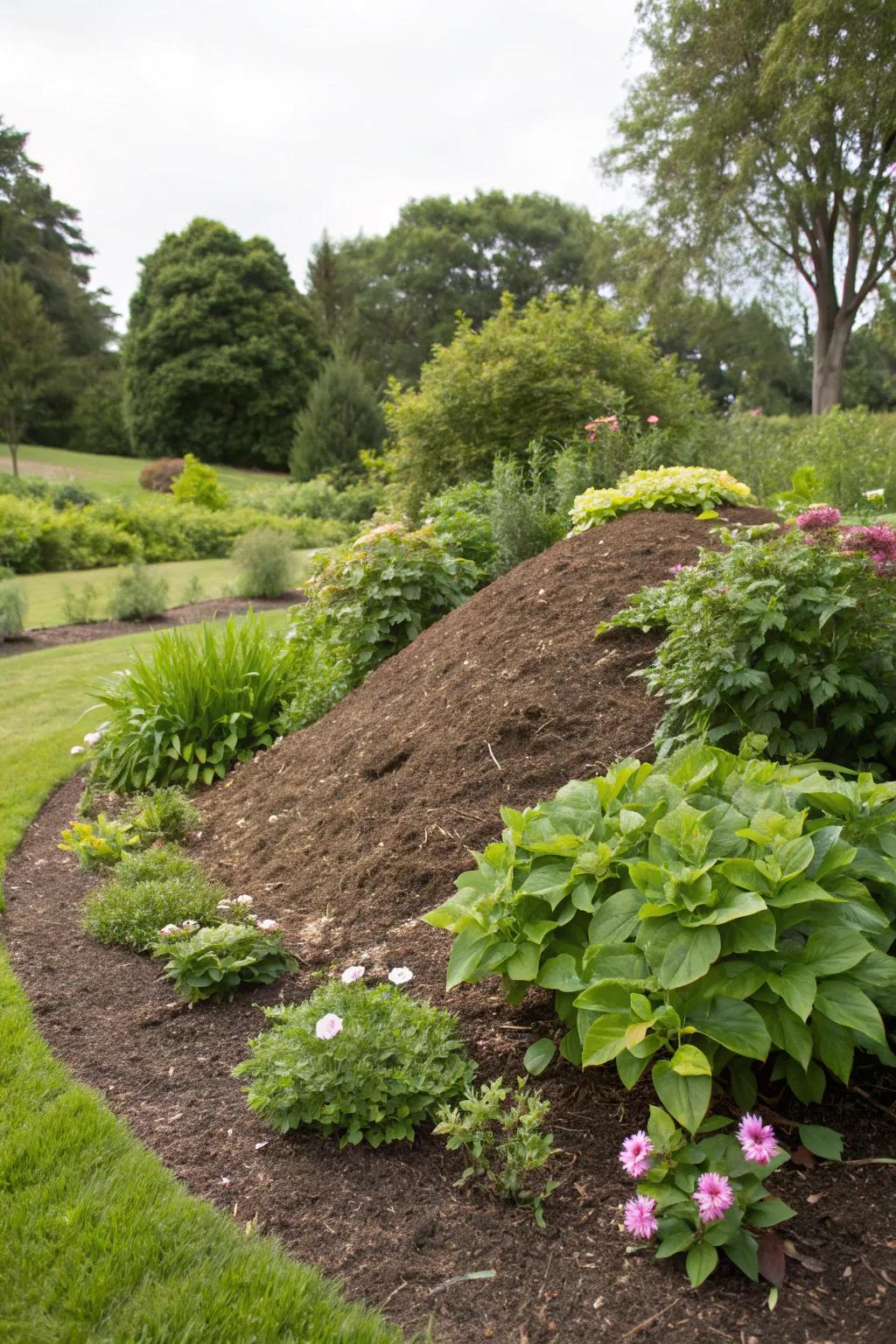
Using mulch or gravel to define your mound’s edges keeps things neat and tidy. I find it also helps in maintaining moisture and suppressing weeds.
Some handy options:
- Garden Mulch for Landscaping: Enhance your garden’s look and retain moisture with this quality landscaping mulch. Easy to spread.
- Decorative Gravel Stones: Add style and functionality to your garden’s edges with these decorative gravel stones. Low maintenance.
- Heavy Duty Garden Edging: Keep your mulch or gravel neatly in place with this sturdy garden edging. Simple installation.
3. Introduce Diverse Vegetation

Mixing evergreens and ornamental grasses gives your mounds texture and year-round interest. My garden feels alive even in the dead of winter thanks to these hardy plants.
You might like:
- Mixed Evergreen Shrub Pack: Transform your garden year-round with a vibrant mixed evergreen shrub pack for lush appeal.
- Ornamental Grass Variety Set: Enhance your landscape’s texture with assorted ornamental grasses for a dynamic, natural look.
- Hardy Perennial Plants: Add hardy perennial plants to keep your garden lively and colorful throughout every season.
4. Layer for Depth and Dimension

Create visual interest by layering plants of different heights on your mounds. This technique turns my garden mounds into natural works of art.
Give these a look:
- Garden Planting Mix: Enhance soil nutrition with a quality plant mix. Ensure lush growth on your landscaped mounds.
- Decorative Garden Edging: Define layers with elegant garden edging. Create clean, structured lines in your landscape design.
- Adjustable Plant Stands: Use versatile plant stands to elevate and showcase key plants for visual interest and depth.
5. Integrate Edible Plants
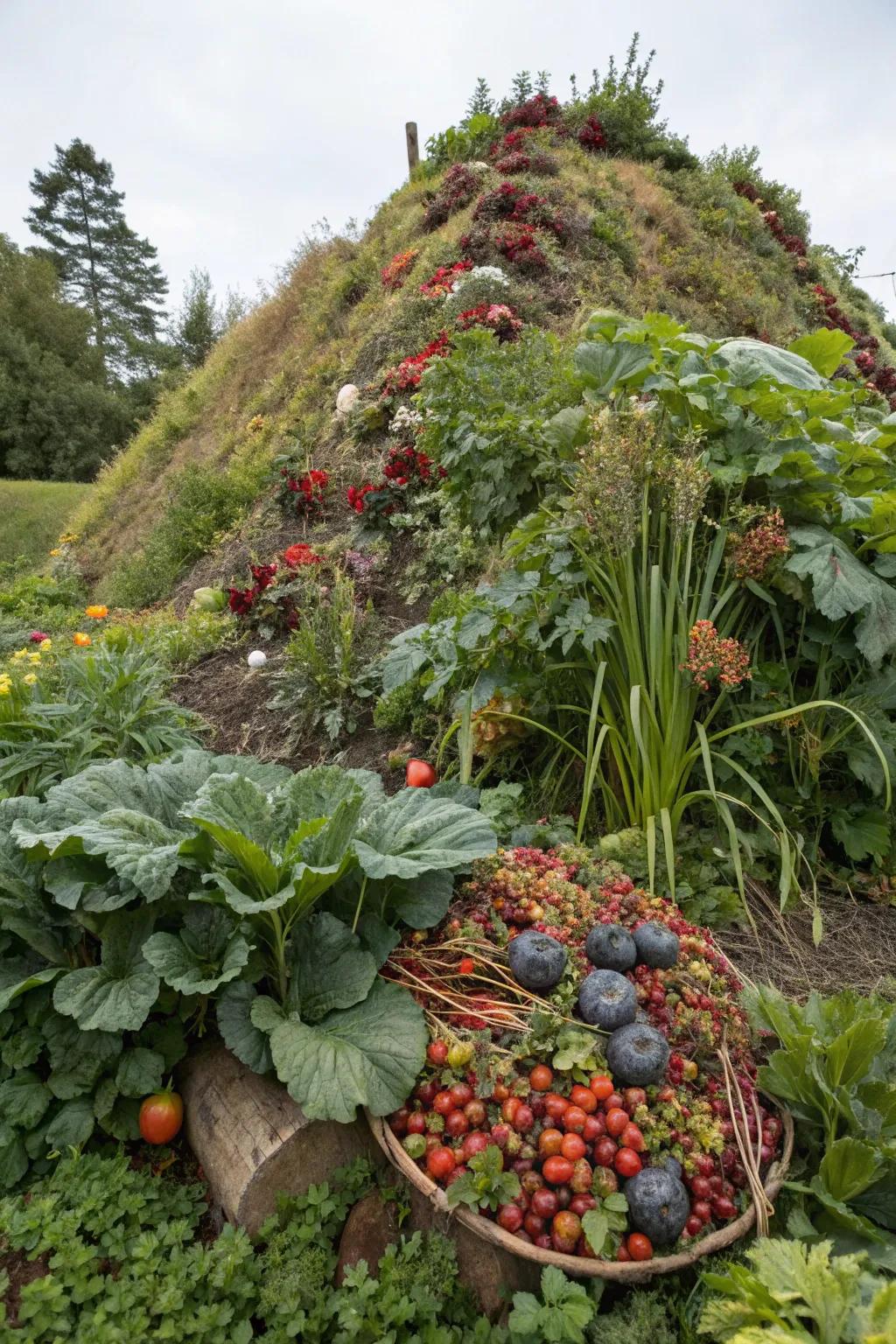
Mix edible plants into your mounds for a tasty twist. I love plucking fresh berries or veggies straight from my garden mounds.
Check if these fit your needs:
- Berry Bush Starter Kit: Grow your own delicious berries at home and enjoy fresh, organic fruit anytime.
- Vegetable Seed Variety Pack: Cultivate a diverse vegetable garden on your mound with easy-to-plant seed varieties.
- Organic Fertilizer for Edible Plants: Boost growth and yield of your garden mounds using this nutrient-rich organic fertilizer.
6. Experiment with Succulents

Use succulents for a low-maintenance, drought-tolerant mound. Their striking shapes and colors add a modern twist to my garden.
Check these products out:
- Succulent Assortment Pack: Add vibrant color and texture to your garden with an easy-to-care-for succulent assortment.
- Cactus and Succulent Potting Soil: Ensure optimal growth by using well-draining soil tailored for succulents and cacti.
- Decorative Pebbles for Succulent Garden: Enhance your succulent display with stylish pebbles that improve soil drainage and aesthetics.
7. Add Sculptural Elements
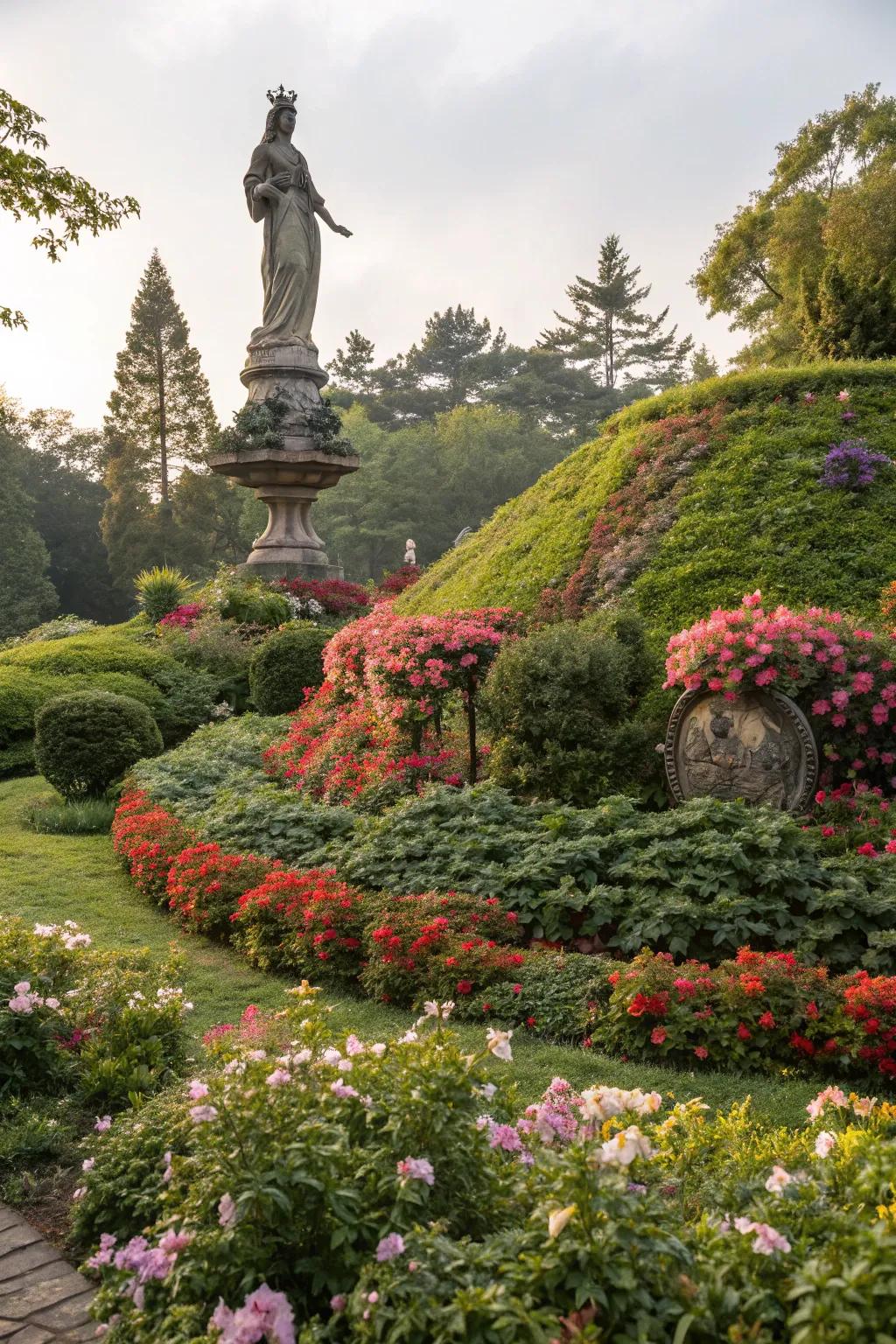
Incorporate sculptures or garden art for a personal touch. These unique pieces always spark conversation when friends visit.
Try these:
- Outdoor Garden Statue: Enhance your garden’s elegance with a captivating outdoor statue. Perfect for sparking conversation.
- Decorative Garden Pedestal: Elevate your art pieces with a durable garden pedestal. Ideal for showcasing sculptures.
- Metal Garden Art Sculpture: Add a modern twist with a striking metal sculpture. Perfect for personalizing your landscape.
8. Introduce Water Features
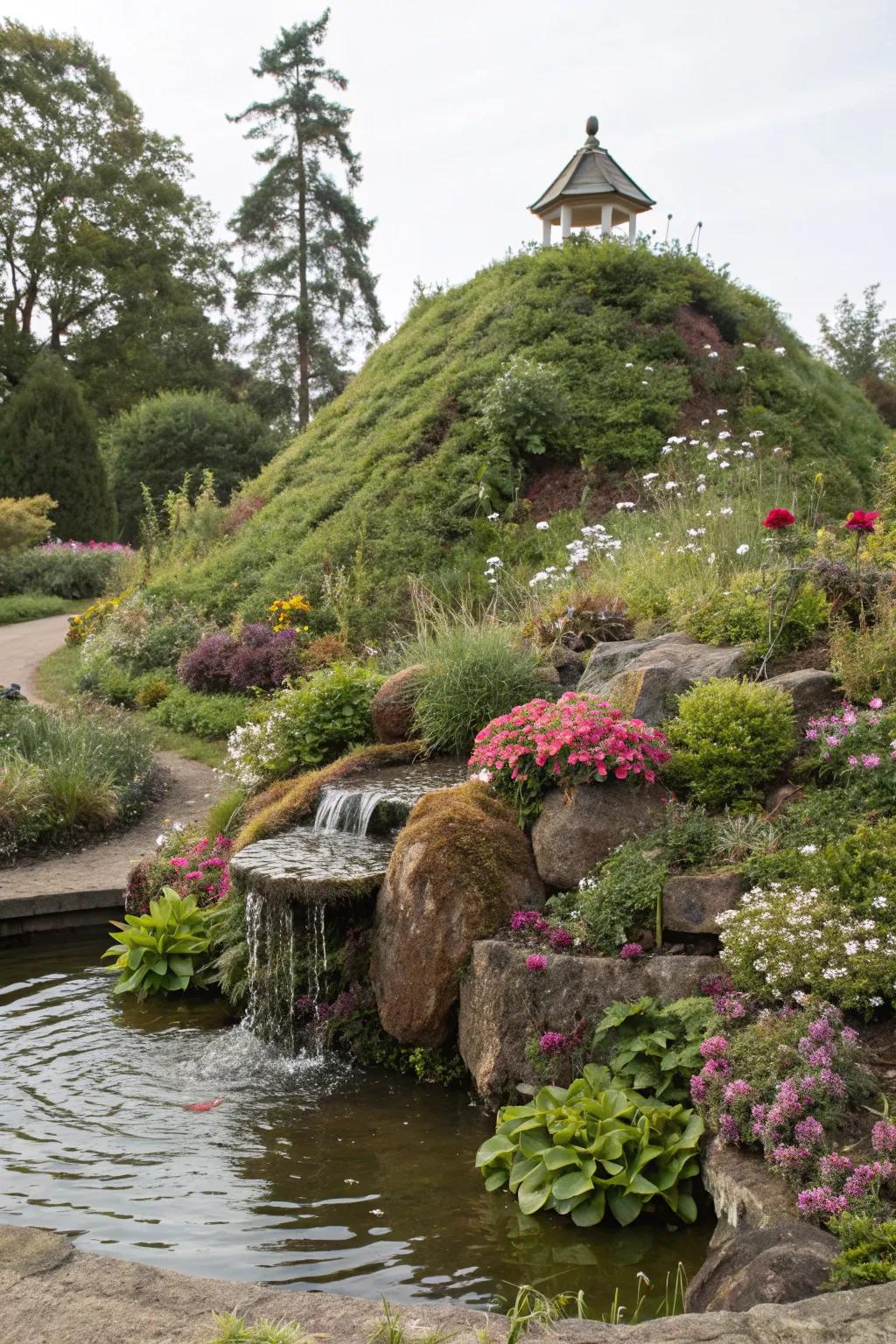
Add a small water feature to your mounds for a soothing ambiance. The gentle sound of trickling water is my ultimate garden soundtrack.
Might be a good match:
- Solar-Powered Garden Fountain: Enhance your garden’s tranquility with a solar fountain, offering sustainable beauty and soothing sounds.
- Outdoor Rock Waterfall Kit: Create a natural waterfall effect in your garden with ease and enjoy peaceful flowing water.
- Pond Liner and Pump Combo: Build a charming pond with this liner and pump combo, perfect for tranquil water landscapes.
9. Light Up with Pathway Lights
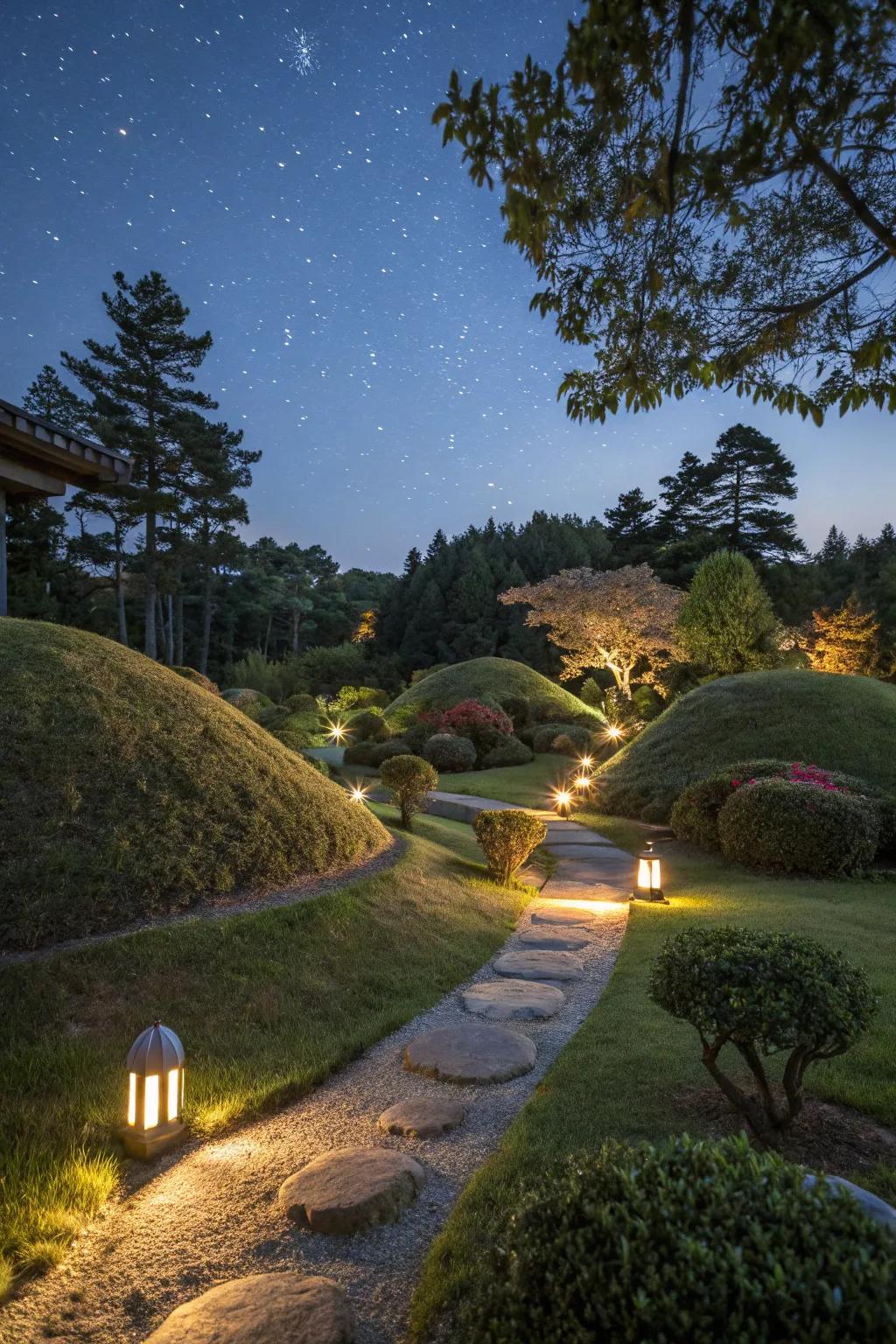
Illuminate your mounds with solar pathway lights for evening enjoyment. My garden transforms into a magical wonderland at dusk.
These products might help:
- Solar Pathway Lights: Enhance your garden’s ambiance with eco-friendly solar lights for a cozy evening glow.
- LED Garden Lamps: Illuminate paths efficiently with durable, bright LED garden lamps for added safety and style.
- Weatherproof Pathway Lights: Light up your landscape with weatherproof pathway lights, ensuring beauty in all conditions.
10. Use Mounds for Privacy
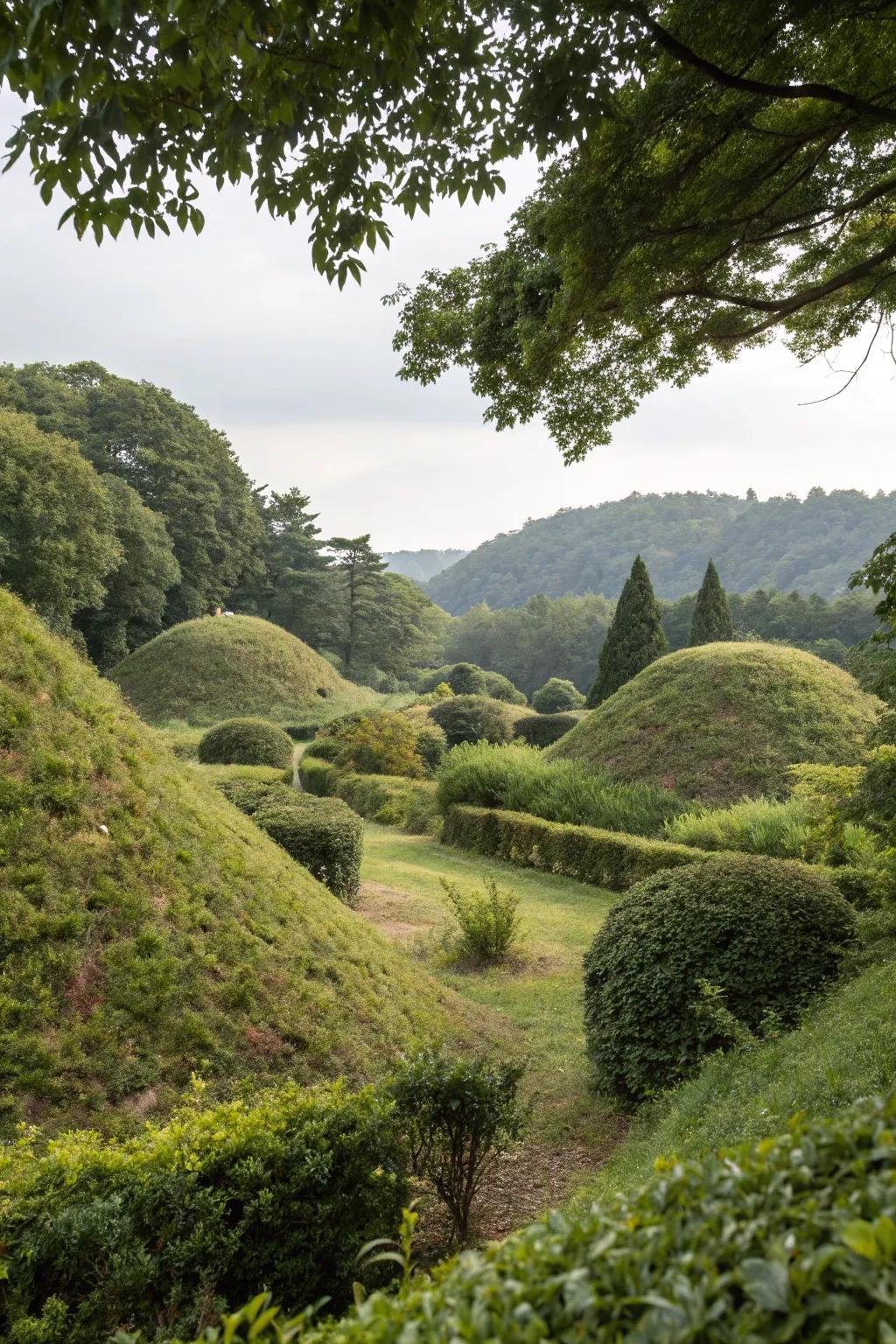
Strategically placed mounds can offer privacy for your outdoor spaces. I enjoy the secluded feel they provide without needing a fence.
Some ideas to consider:
- Landscape Fabric: Enhance privacy mounds with durable fabric to prevent weed growth and stabilize soil easily.
- Decorative Grass Seed Mix: Add lush greenery to your privacy mounds with this easy-to-grow decorative grass seed mix.
- Garden Soil: Boost soil health in your privacy mounds with nutrient-rich garden soil for vibrant plant growth.
11. Plant a Colorful Flower Array

Fill your mounds with a variety of colorful flowers for a vibrant, eye-catching display. I love using a mix of perennials and annuals to keep my garden lively throughout the seasons.
May just do the trick:
- Mixed Flower Seed Pack: Transform your garden with vibrant flower seeds for a stunning and delightful display.
- Garden Soil for Flowers: Enhance your flower bed with nutrient-rich garden soil, promoting healthy and vibrant blooms.
- Colorful Outdoor Plant Pots: Add charm to your garden with colorful ornamental pots, ideal for showcasing beautiful flowers.
12. Add Seasonal Interest
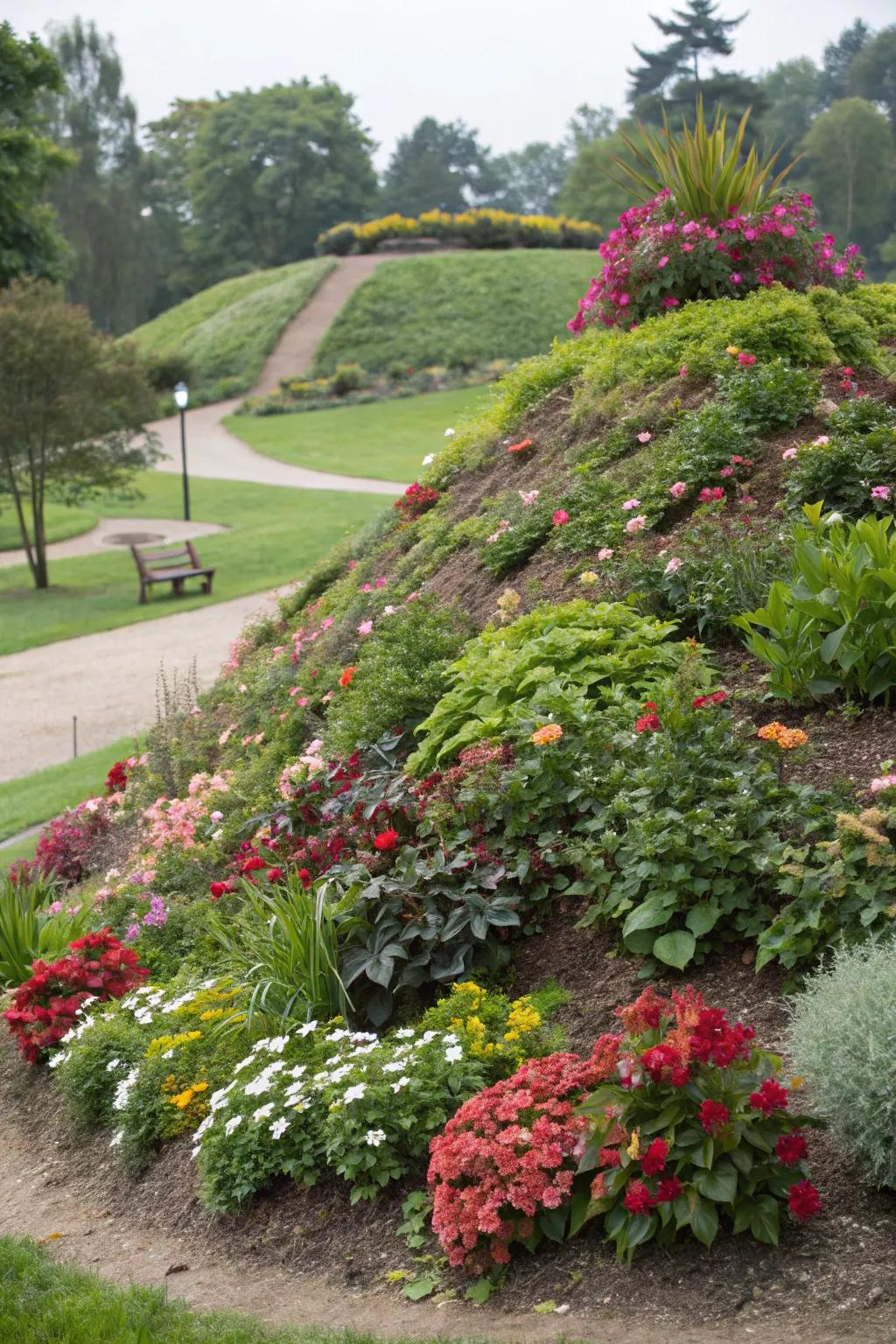
Plant for seasonal interest to keep your mounds changing throughout the year. Each season brings a new surprise to my garden.
Possibly handy products:
- Perennial Flower Mix: Transform your mound with vibrant blooms by planting a dynamic perennial flower mix today.
- Ornamental Grasses: Add texture and movement to your mounds with elegant and hardy ornamental grasses.
- Seasonal Flowering Bulbs: Plant flowering bulbs and enjoy stunning seasonal displays of color in your garden mounds.
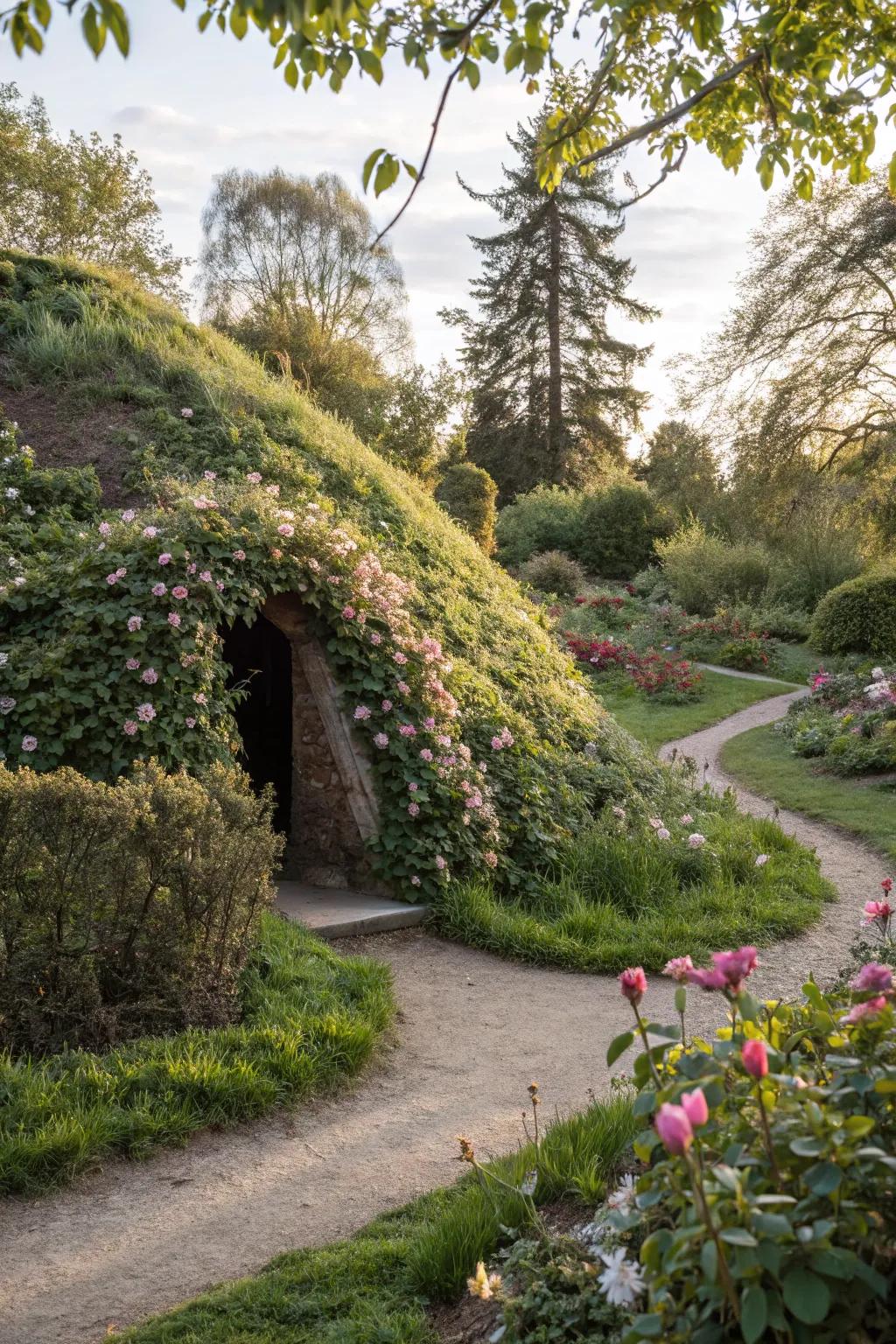
Use mounds to hide secret spaces for an element of surprise. Visitors love discovering these unexpected pockets in my garden.
Maybe worth checking out:
- Garden Path Lights: Illuminate secret spaces with subtle garden path lights, enhancing your garden’s magical atmosphere.
- Outdoor Climbing Plants: Add climbing plants for natural coverage and mystery, enticing visitors to explore hidden areas.
- Decorative Garden Arch: Install a decorative garden arch to create an enchanting entrance to hidden garden spaces.
14. Incorporate Rustic Elements
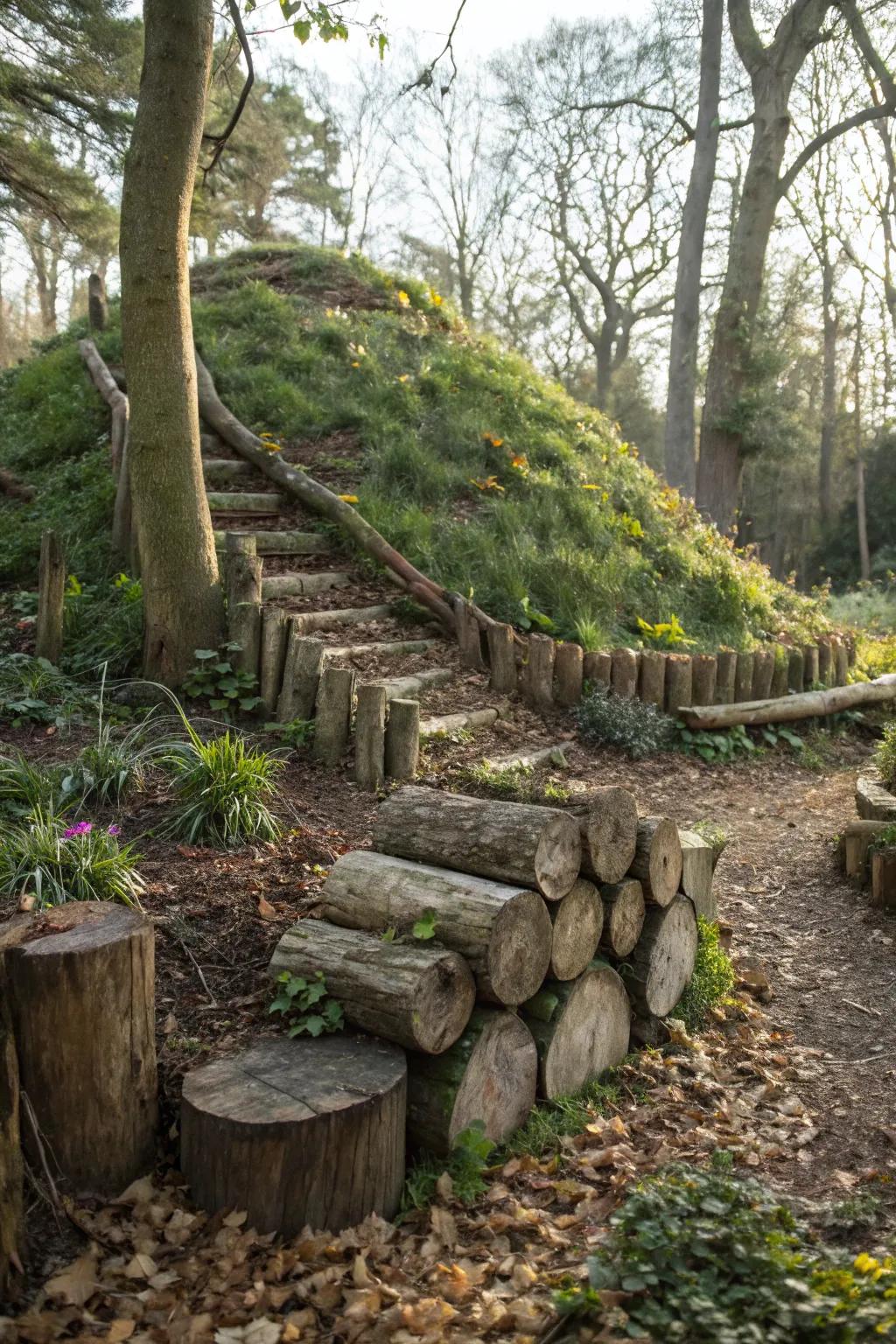
Add a rustic touch with log borders or natural materials for a cozy, organic feel. This is my secret to making my garden feel like a woodland retreat.
Useful items to consider:
- Natural Wooden Log Edging: Define your garden paths with wooden edging for an authentic woodland retreat vibe.
- Rustic Garden Pathway Stones: Enhance your garden paths with rustic stones, adding charm and structure seamlessly.
- Wooden Garden Stairs: Install wooden stairs for easier mound access, offering functionality with rustic appeal.
15. Create a Mini Herb Garden

Transform a mound into a herb garden for a practical yet beautiful addition. I love having fresh herbs just a few steps away from my kitchen.
A few things you might like:
- Raised Garden Bed Kit: Enhance your garden’s functionality with a raised bed. Easy assembly and excellent drainage.
- Organic Herb Seeds Variety Pack: Start your own herb garden with a variety pack of organic seeds for diverse fresh flavors.
- Garden Soil Mix: Boost your herb growth with nutrient-rich soil. Perfect for lush, healthy plants.
16. Design Curved and Winding Paths
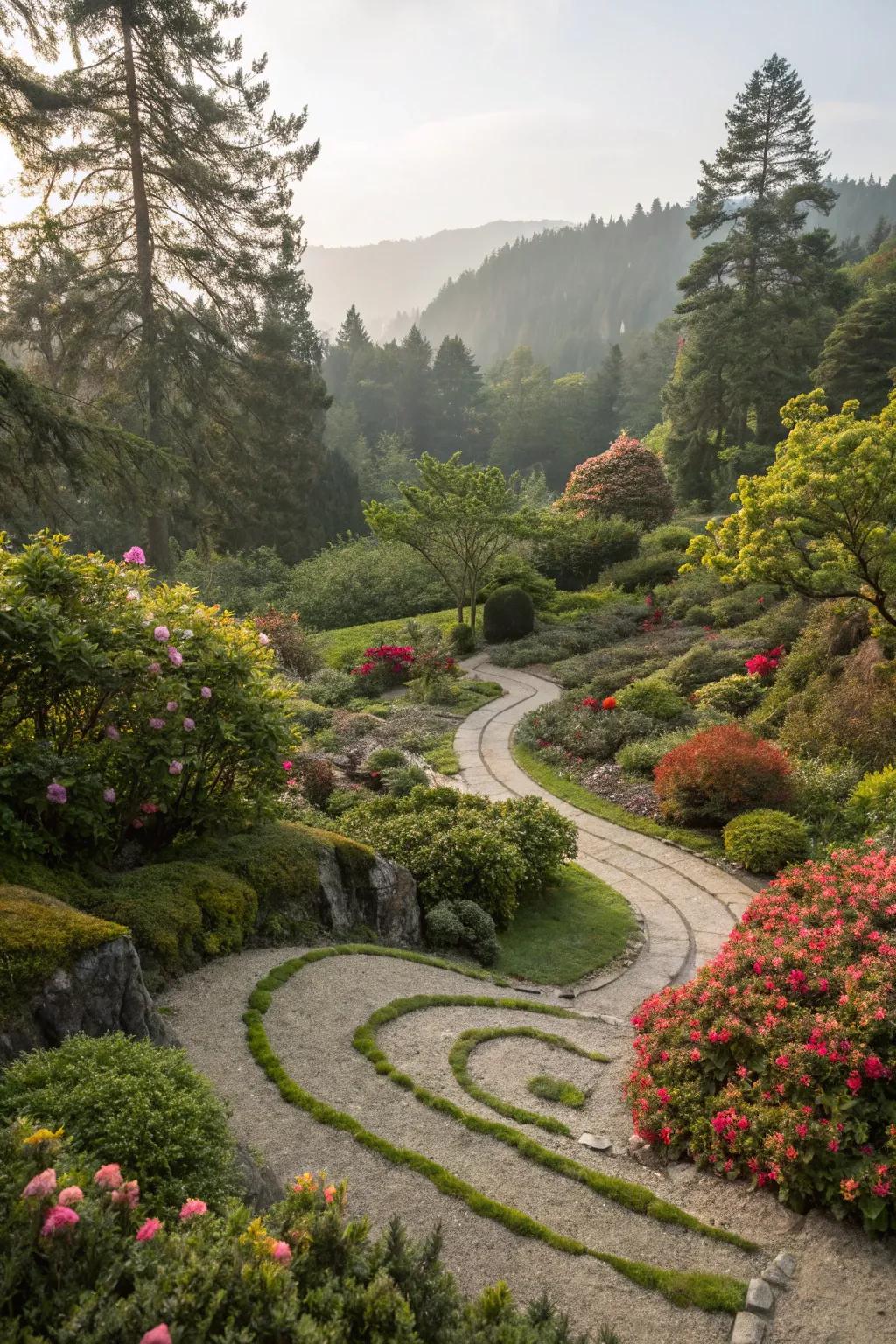
Create inviting curved paths that meander through your mounds. These pathways make exploring my garden feel like an adventure.
Explore these options:
- Garden Pathway Stones: Enhance your winding paths with elegant stones, adding charm and durability to your garden trails.
- Outdoor Pathway Solar Lights: Illuminate your curved paths at night for safety and ambiance with eco-friendly solar lights.
- Landscape Edging Kit: Define your garden paths effortlessly with flexible edging that shapes and controls your curvy designs.
17. Create a Secret Seating Nook
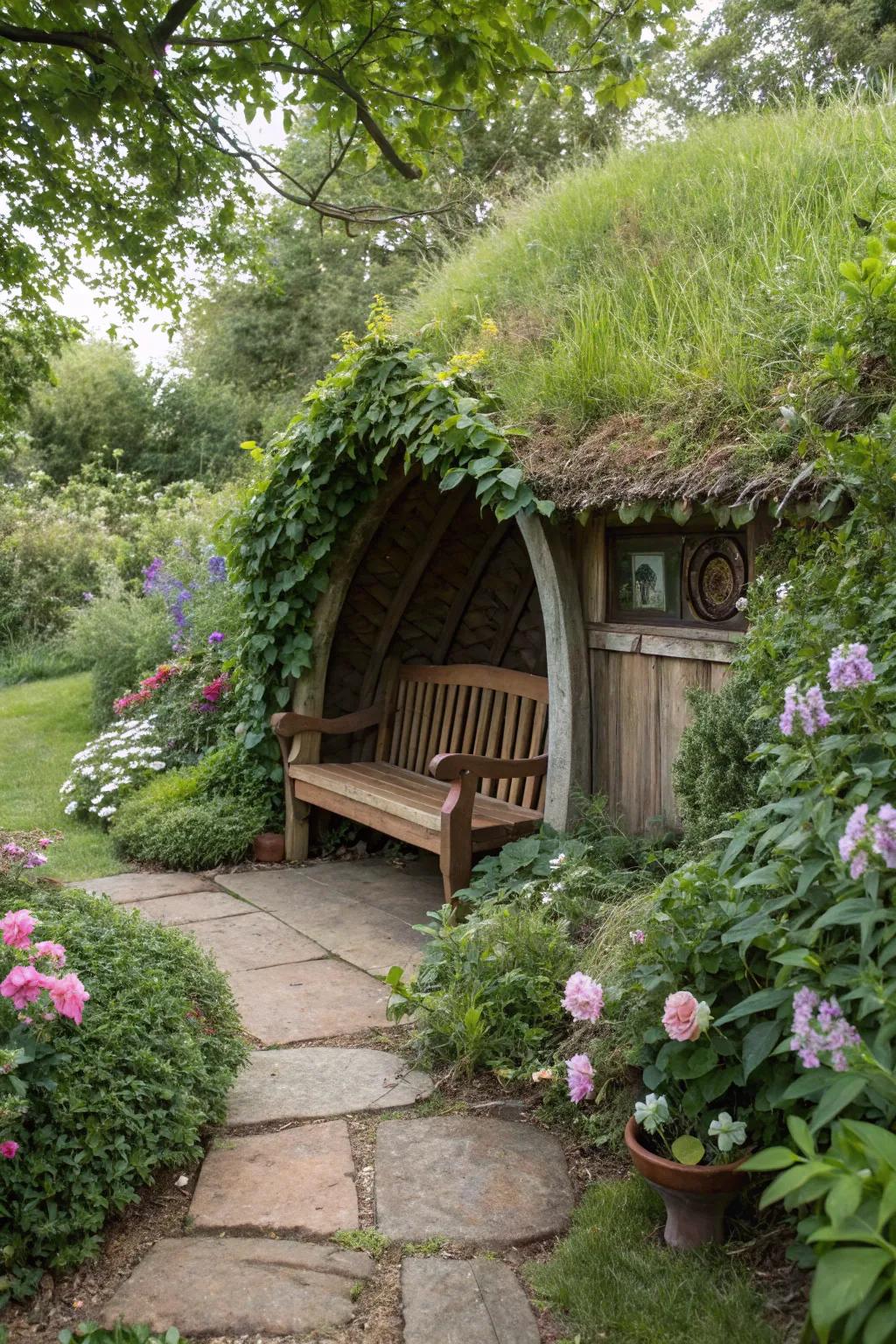
Tuck a bench or seating area within your mounds for a hidden escape. I adore having a quiet spot to enjoy my morning coffee surrounded by nature.
Products that could assist:
- Wooden Garden Bench: Enhance your secret nook with a charming wooden bench to enjoy tranquil mornings in nature.
- Outdoor Throw Pillows: Add comfort and color to your seating area with stylish outdoor throw pillows.
- Outdoor Solar Lanterns: Illuminate your secret nook with eco-friendly solar lanterns for evening relaxation.
18. Opt for a Wildflower Mound

Let wildflowers take over for a natural, carefree look. My wildflower mound attracts all the bees and butterflies, making it a buzzing hub of activity.
Possibly helpful picks:
- Wildflower Seed Mix: Transform your mound into a vibrant haven with diverse wildflowers; attract bees and butterflies.
- Bee and Butterfly Garden Stakes: Enhance your garden’s beauty and charm with decorative stakes, inviting pollinators in style.
- Organic Fertilizer for Flowers: Boost your wildflowers’ growth naturally, ensuring a thriving and colorful landscape throughout the season.
